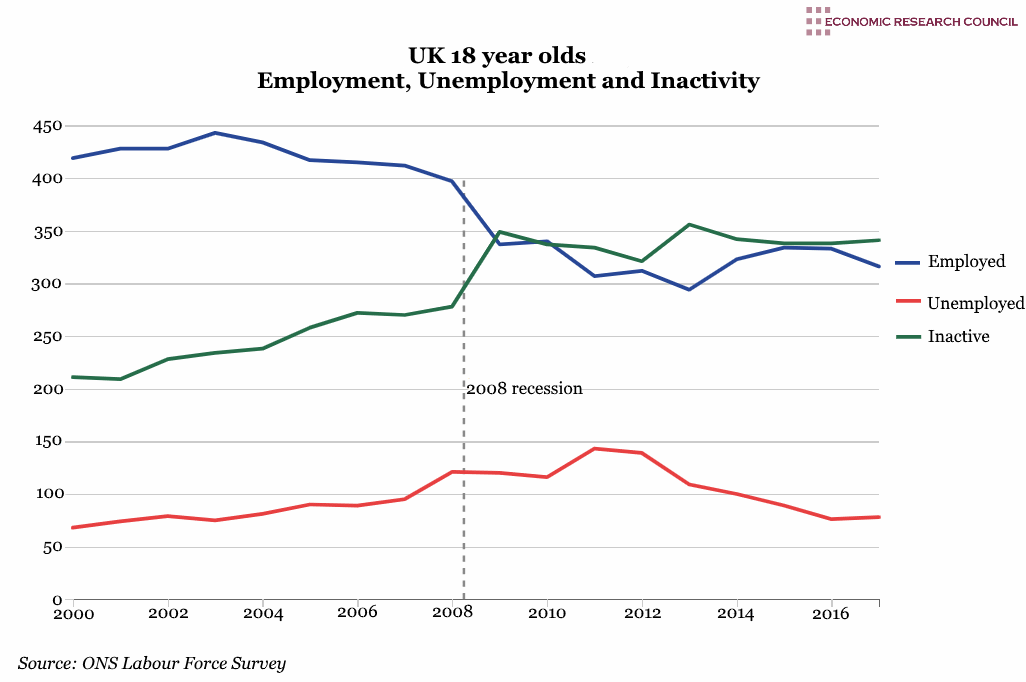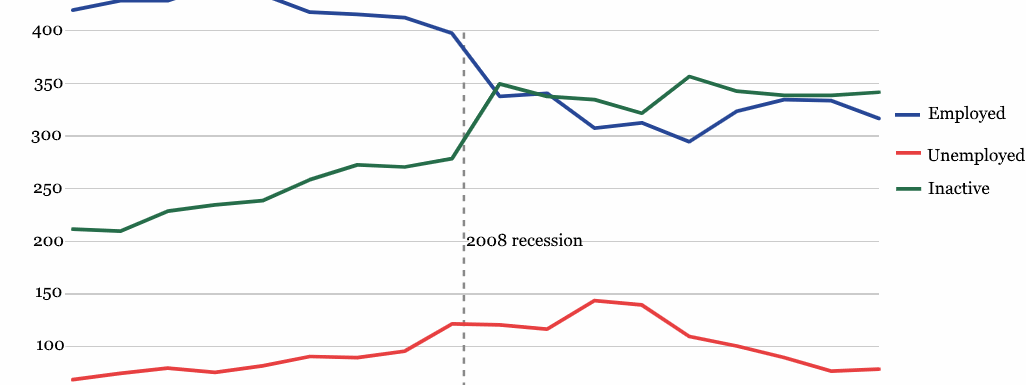
Summary
It is clear that the 2008 recession has had a profound impact on the life choices of UK 18 year olds. Although in decline prior, the number employed fell at a starker rate following the crash. Just over two-fifths of 18 year olds are currently in employment, down from three fifths in 2000. Unemployment is roughly at the same level over the period, with a slight increase following the downturn that has since corrected. The rise in those aged 18 and economically inactive has been bolstered by ever-growing numbers choosing to continue into higher education.
What does the chart show?
The chart displays the historical trend in 18 year olds’ employment in the UK from the year 2000 through to 2017. All the metrics are measured in thousands on the left hand axis and the data is not seasonally adjusted. The blue line shows the number of 18 year olds in employment, including full and part time. The Red line shows those unemployed, who must be actively seeking employment to be included. The inactive refers to economic inactivity or those not seeking employment due to being engaged in training or education. The ONS extrapolates this data from the Labour Force Survey of some 40 thousand UK individuals.
Why is the chart interesting?
Today’s 18 year olds have been dubbed ‘Generation Sensible’ based on their greater likelihood of being in university and lower likelihood to report drinking alcohol or smoking. Although the rise in tuition fees may have deterred some, it is possible that wage stagnation coupled with high housing costs has meant that, for many, leaving for state-subsidised university places has become a more attractive option than remaining living with their parents. Indeed 2017 was a record year for UK universities with one third of 18 year olds (nearly a quarter of a million) beginning some form of further study. This is likely a product of various policies, including the extension of mandatory education to 18 and the widening of access to higher education. New universities and more flexible HE institutions have mushroomed and wider variety of course subjects are now on offer, which have been criticised by some as lacking academic rigour. In any case, young women alongside those from non-traditional educational backgrounds are entering higher education in ever higher numbers as a result of the vastly increased number of both courses and places.
The number of babies born to 18 year old women has continued its downward trend following improved sexual health education. In the period shown there was a drop of almost three fifths in births to 18 year old mothers and the average age of first-time mothers rose to 29.
It is possible that following the economic downturn, workers aged 18 did not experience the rise in unemployment that their older counterparts. This may be due to the relatively lower cost of employing 18 year old workers to minimum wage positions or the relatively lower aversion to more precarious or casual employment.
Week 15, 2019

